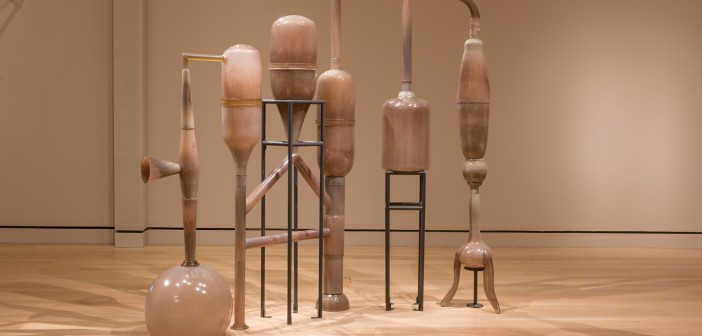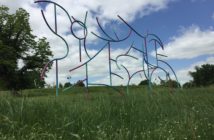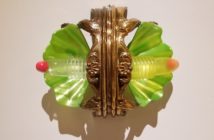Born in 1959 in Cuba, María Magdalena Campos-Pons first came to Boston through a MassArt exchange program in 1988. After arriving in Boston, Campos-Pons began bringing a variety of media, including photography, video, and performance, into her painting practice. Campos-Pons’s work, often large-scale and autobiographical, investigates the rich interconnection between Cuba and the United States, of memory and time, and of identity and individuality.
Comprised of an intensely tactile installation, composed of sound, video, photographs, drawings, and glass-blown sculptures, Alchemy of the Soul: Maria Magdalena Campos-Pons, currently on view at the Peabody Essex Museum, is an almost monographic look at Campos-Pons’s work. Produced via collaboration between Campos-Pons and her husband Neil Leonard, Alchemy of the Soul fuses Campos-Pons’s preoccupation with memory with Leonard’s work with sound and musical composition. Curated by PEM deputy director Joshua Basseches, the exhibition, which even explores smell as a trope, is an immersive experience of the particular history of Cuba and the United States.
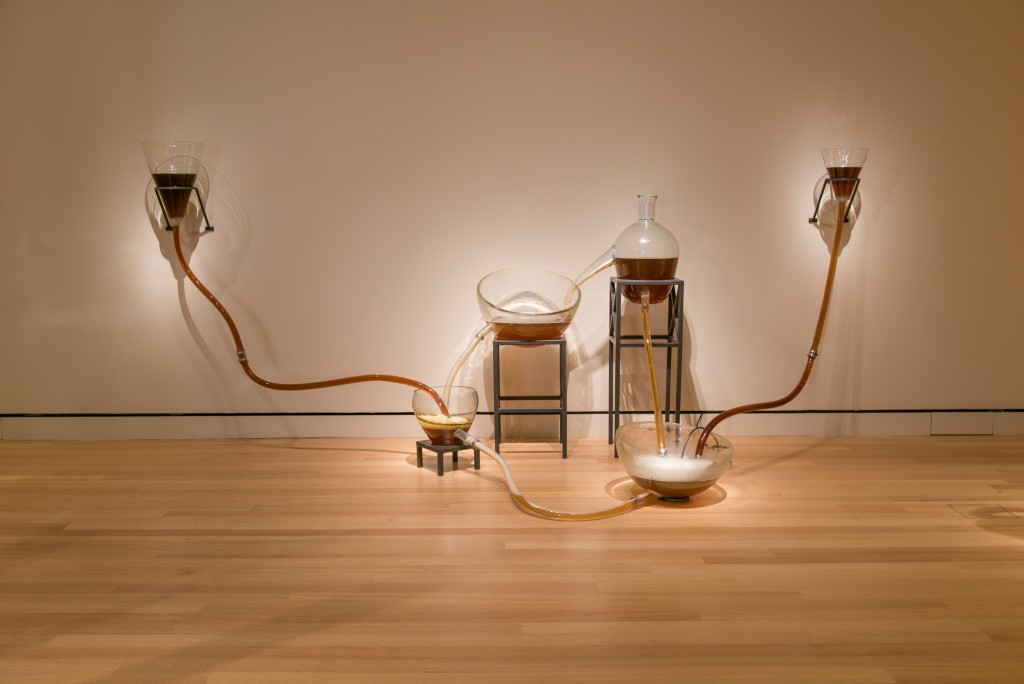
Maria Magdalena Campos-Pons. Alchemy of the Soul, Elixir for the Spirits, 2015. Peabody Essex Museum. © 2016 Peabody Essex Museum. Photo by Peter Vanderwarker.
Cuba’s international sugar and rum industry are central thematic concentrations of Alchemy of the Soul. The exhibition, which begins within the museum’s freight elevator, a choice that clearly introduces the idea of labor, is anchored by the installation Alchemy of the Soul, Elixir of the Spirit in the museum’s special exhibition gallery. Though the elevator and corridor outside the gallery are festooned with almost cheesy burlap sugar sack props, the show is gracefully installed to a haunting and transcendent effect. The gallery is dimly lit with a thick, humid atmosphere and a soft trickling sound surrounds the five mammoth glass sculptures that comprise the work. A sweet, unfamiliar smell also pervades the space; this is the scent of sugar being distilled into rum substitute, the liquor that buttressed the Cuban economy until the revolution, and before that, supported the slave trade in the Caribbean and Americas.
In many ways, Alchemy of the Soul fuses Campos-Pons’s early and current works. Before leaving Cuba for Boston, Campos-Pons’s paintings concentrated on gender inequality and other feminist themes. Two of Campos-Pons paintings from this period, Cinturó de Castidad and Anticonceptivo, are illustrated in a digital catalog, and presage much of Campos-Pons later work. Both works are sculptural, incorporate wood into traditional painting materials, and utilize lightly abstracted forms to depict recognizable forms. “Her experience in Boston led [Campos-Pons] to consider an expanded set of social and political concerns,” writes Basseches in one of his detailed catalog essays included in the digital catalog.
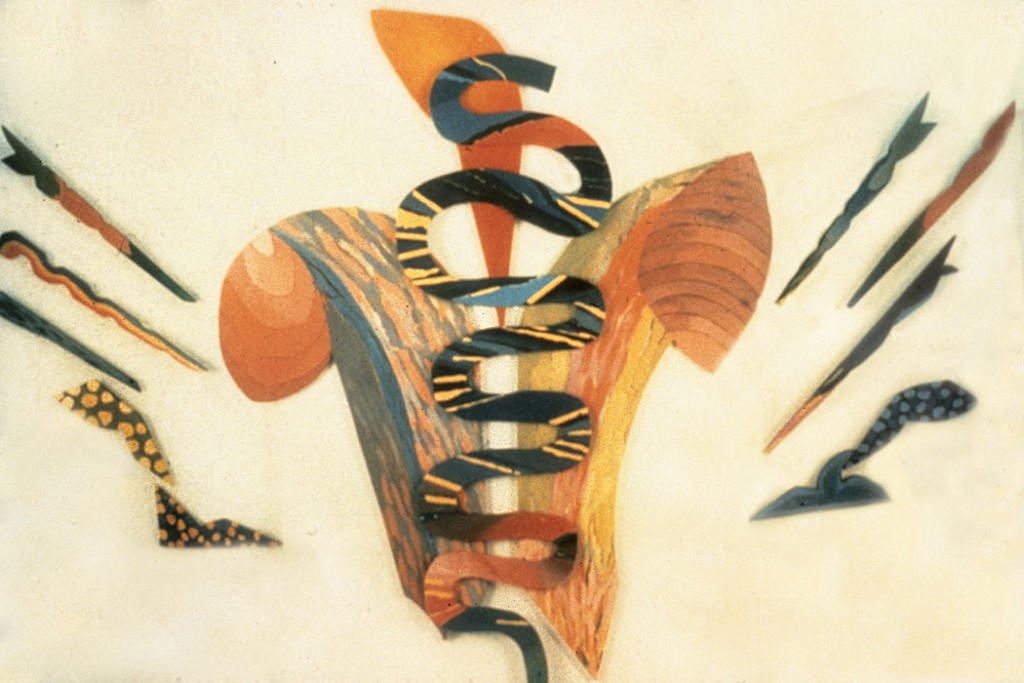
Anticonceptivo (Contraceptive), 1987, acrylic on canvas and wood,
approx. 157 × 197 in. (397.8 × 500.4 cm), National Cuban Foundation,
Havana, Cuba.
Courtesy of Indianapolis Museum of Art.
Likewise, Campos-Pons’s time at MassArt as part of a graduate student exchange bore a fruitful involvement with a variety of artistic and aesthetic approaches. With an understanding of painting practices as well as photography, video, sound, and installation, Campos-Pons’s work assumed a global tenor despite her solidly abstract approach. Basseches’s essay explores this new direction, investigating how Castro’s government of the late 1980s and early 1990s—the fall of the Soviet Union as well as participation in the Angolan civil war—infused Campos-Pons’s work from the period with a radical vigor. The painstaking and timely immigration process also introduced a nascent interest in exile, or, as Basseches discusses, double exile.[1] “The result was an increased focus on a set of issues related to dislocation, personal identity, and the black body, particularly the artist’s own body,” Basseches writes.
Sugar is produced from backbreaking labor, and its ubiquitous popularity cultivated a taste for brutal control and economic dominance among the merchants who traded the substance. As some of these merchants lived in Salem, and because the Peabody Essex commissioned this work for the exhibition, Alchemy of the Soul, Elixir of the Spirits offers an especially compelling way in which to search the complex history of labor, trade, currency, politics, and power that connect through the global history of the sugar industry.
Six sculptures, or “sculptural elements,” comprise this work. Each created from hand-blown glass, some colored, some clear, these sculptures are inspired from the relics of decaying mill buildings that populate La Vega, Cuba. These ruinous mill buildings once distilled rum, alloying sugar into the intoxicating drink. The glass sculptures are bulky, seemingly planted into the floor through their steel piping, yet graceful and lithe in their transparency. Glass, like rum, is a blend of natural elements worked into a consumable product, a material that mimics Campos-Pons’s overarching interest in alchemy. Combined with the gallery’s low lights and the trickle of distilling rum, the sculptures become specters of shadow. Their shapes blend anthropomorphism with stark, straight edges of modern industrial design, convoluting these forms into otherworldly, familiar but strange, apparitions.
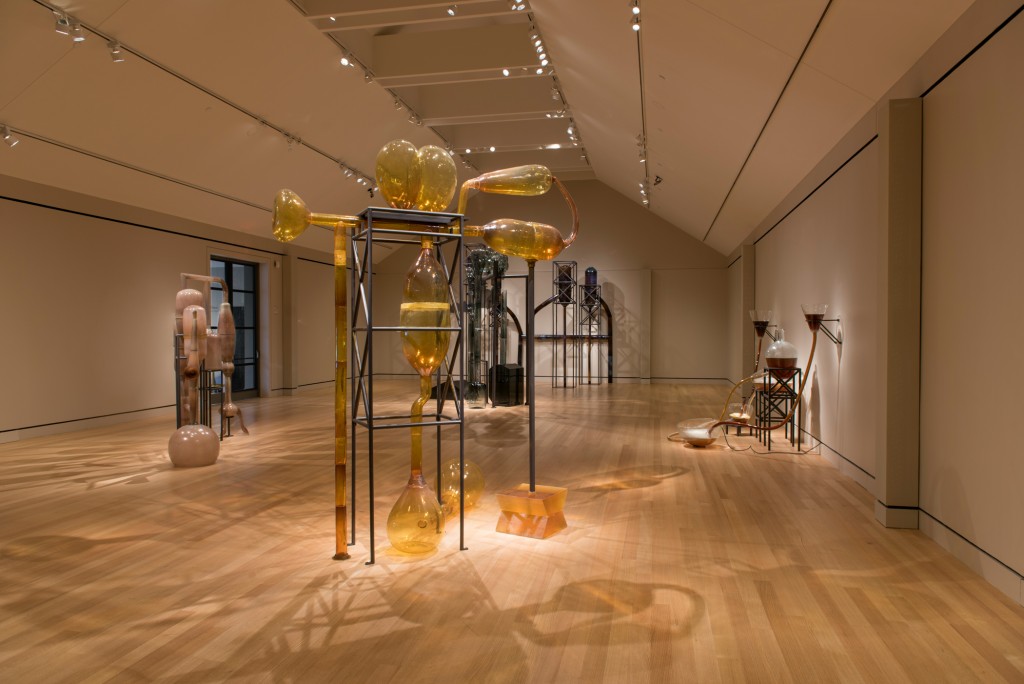
Maria Magdalena Campos-Pons, Alchemy of the Soul, Elixir for the Spirits, 2015, blown glass, cast glass, steel, cast resin, silicone, acrylic, polyvinyl chloride tubing, water, and rum essence, dimensions variable, Peabody Essex Museum. © 2016 Peabody Essex Museum. Photography by Peter Vanderwarker.
The pain of exile and double exile dominate Campos-Pons’s work from the 1990s and 2000s. Examples of her work in this period are on view in a gallery across from Alchemy of the Soul, Elixir of the Spirit, accessible via a small bridge. Taking the short walk between galleries, it’s hard not to consider the literal journey that Campos-Pons and other Cuban-Americans have taken to reach the United States, a country so close geographically, yet so distanced ideologically and economically. At the center of this second room is a small blue sculpture from the Alchemy of the Soul, Elixir of the Spirit body of work, surrounded mostly by works on paper. The body is central to this work; physical dissociation reverberates in each, though from what is not exactly clear.

Blue Refuge, 2008, 9 dye diffusion transfer (Polaroid) prints, 24 × 20 in. (61 × 50.8 cm) each, DeCordova Sculpture Park and Museum, Museum Purchase with funds provided by members of the DeCordova Collections and Exhibitions Committee and the Frederick P. Walkey Fund, a gift of the Stephen and Sybil Stone Foundation, 2009. Photo by Kathy Tarantola/PEM.
In Blue Refuge (2008), a grid of nine Polaroid photographs, a feminine form sits huddled in orange and tethered to a rope of hair, her back facing us. The roots stretch into the surrounding prints, each mostly blue, the hue oscillating between pure color and floral shapes. The form seems lost in a blue ocean or tundra, which, in conjunction with its title, gives the work political significance. Likewise, in Dreaming of an Island (2008), another grid of nine Polaroid photographs, Campos-Pons presents a seated black woman in the top right photograph looking out at a wooded island of northern New England situated a short distance away. The woman is also turned away from the viewer though her posture is more confident than her counterpart in Blue Refuge. A strand of hair descends from her, stretching into each of the prints below. These works are soft, gentle, and pensive, not overtly political or ideological. Instead of the freshness of exile, here Campos-Pons is focused on memory and how it is shaped by distance.
In many ways, La Vega is another world from that of Campos-Pons’s youth. Alchemy of the Soul allowed Campos-Pons to travel back to La Vega for the first time in thirty years, and the Peabody Essex documented the trip extensively. Campos-Pons created poignant videos from this trip, which play in a darkened corner space of the main gallery. Many more documentary videos are available within the digital publication. In one of these, Campos-Pons is filmed exploring her childhood town. “I’m lost in the town,” she says. “So many things have been transformed here, and so many things, in the same way, stay the same.” Likening this reality to how sugar is concocted into rum, Campos-Pons looks intensely proud for a moment and then looks away in tears. Lived on both sides of the Cold War, Campos-Pons’s work, created through the tensions and drama of that war, is evidence that no matter their differences, the United States and Cuba share an alchemic identity.
Alchemy of the Soul: Maria Magdalena Campos-Pons is on view through April 3.
[1] Basseches writes that “the first exile was the Middle Passage that forcibly relocated Campos-Pons’s Yoruba great-grandparents to Cuba to work as slaves on sugar plantations; the second, the artist’s self-initiated exile to Canada and then to the United States, a move that left her unable to return to Canada for over a decade.” Joshua Basseches, “Leaving Cuba for the North,” Alchemy of the Soul: Maria Magdelena Campos-Pons, http://pem.org/sites/alchemy/leaving_cuba/

